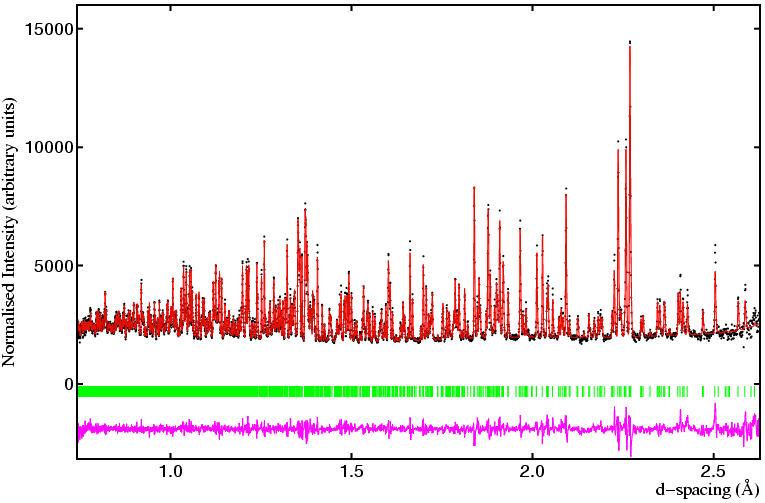 |
TOF Data Collection |
 |
TOF Data Collection |
TOF Data Collection
There are very few instrumental parameters that can be varied by the user of a neutron TOF powder diffractometer since the detectors are all fixed. The only parameter of interest is the total acquisition time, which will vary from one sample to another.
As for angle-disperive instruments, it is excellent laboratory practice to run a standard sample (e.g. Si) on the diffractometer before collecting any other experimental data. This will enable the user to check that the instrument is working correctly. Standard samples can also be used for instrument calibration, for example, as a check on the total flight path, L, of the instrument.
With TOF data, it is common to apply a background correction, and a correction for the combination of incident spectral flux and detector response is essential. After the various corrections, a TOF powder diffraction pattern has the typical appearance shown in the Rietveld plot below:

You should note two things from the above plot: (a) the range and resolution of the smaller d spacings is impressive, but (b) the largest d spacings are not present. The consequences of this are that excellent structural parameters can be derived from such data sets, especially for anisotropic displacement parameters, which require a wide range of d spacing for their precise determination, but that unit-cell indexing may be a problem unless the poorer-resolution data from low-angle detector banks is exploited.
|
© Copyright 1997-2006.
Birkbeck College, University of London.
|
Author(s):
Jeremy Karl Cockcroft Jacky Turner |